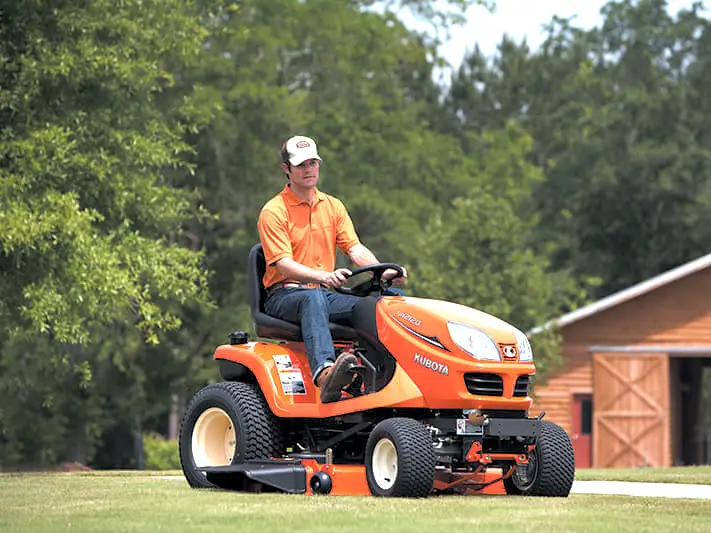Kubota hydraulic valve problems can result in changes in pressure, internal or external leaking, valve sticking, or valve failure. These issues can be caused by factors such as mechanical failure, broken parts, or low oil pressure.
To fix these problems, it may be necessary to adjust the hydraulic relief valve or replace broken parts or the entire valve. Signs that indicate a hydraulic control valve needs repairing include changes in pressure and leaking. Common causes of hydraulic system failures include pressure valve leaks, sticking or binding, and slow response time.
If you’re experiencing issues with your Kubota hydraulic valves, it’s important to address them promptly to ensure the proper functioning of your equipment.
Symptoms Of Hydraulic Valve Problems
Title: Kubota Hydraulic Valve Problems
Hydraulic valve problems in Kubota tractors can manifest in various ways. Here are some common symptoms to look out for:
- Change in pressure: If you notice a sudden change in hydraulic pressure, such as a loss of power or slower operation, it could indicate a valve problem.
- Internal leaking: Internal leaks can occur within the hydraulic valve, leading to reduced overall performance.
- External leaking: External leaks, where hydraulic fluid drips or sprays from the valve, are another sign of a potential problem.
- Valve sticking: Sticky valves can get stuck in certain positions, causing irregular or improper operation.
- Valve failure: In severe cases, hydraulic valves can completely fail, resulting in the inability to control the hydraulic system.
If you experience any of these symptoms, it is essential to address the issue promptly to avoid further damage to your Kubota tractor’s hydraulic system. Consulting a professional technician or Kubota dealership can help diagnose and resolve the issue effectively.

Credit: www.youtube.com
Common Causes Of Hydraulic Valve Failure
| Subheading | Description |
|---|---|
| Mechanical failure |
Springs, pins, washers, and detent devices can break, leading to the jamming or sticking of the valve. In such cases, replacement of the broken parts or the complete valve is required. |
| Faulty valve components |
If the valve’s components are faulty, it can result in various issues such as pressure valve leaks, sticking/binding, slow response time when lifting or dropping the hitch. Other problems may include low oil pressure and valve failure. |
Hydraulic control valve problems can be identified through certain signs. These signs include changes in pressure, internal or external leaking, valve sticking, and valve failure. If you notice any of these signs, it is important to have your hydraulic control valve repaired as soon as possible to prevent further damage.
In addition to these signs, there are various reasons why hydraulic valves may fail. Some common causes of hydraulic valve failure include mechanical issues, faulty valve components, and inadequate maintenance practices. Mechanical failure can occur when springs, pins, washers, or detent devices break, leading to jamming or sticking of the valve. Faulty valve components can result in issues such as leaks, sticking/binding, and slow response time. It is important to regularly maintain and inspect hydraulic valves to avoid these problems.
Troubleshooting Kubota Hydraulic Valve Problems
| Subheading: Checking for pressure valve leaks |
| Inspecting for sticking or binding valves |
| Identifying and addressing internal or external leaks |
Pressure valve leaks can be a common issue with Kubota hydraulic valves. It is important to regularly check for any signs of leaks, such as fluid dripping or puddling around the valve. Additionally, inspecting for sticking or binding valves is crucial to ensure proper functioning. Valves that are stuck or binding may cause restricted flow or complete obstruction, leading to decreased performance. Internal or external leaks can also occur, causing fluid loss and potentially damaging other components of the hydraulic system. Identifying the source of the leak and addressing it promptly is essential for preventing further problems. Whether the issue is a damaged seal or a cracked valve body, professional repair or replacement may be necessary to resolve the problem effectively.
Frequently Asked Questions On Kubota Hydraulic Valve Problems
How Do I Know If My Hydraulic Valve Is Bad?
Signs that your hydraulic valve is bad include changes in pressure, internal or external leaks, valve sticking, and valve failure. These issues can lead to slow response time, low oil pressure, and other problems. To fix a bad hydraulic valve, you may need to replace broken parts or the entire valve.
What Causes Hydraulic Valve Failure?
Hydraulic valve failure can be caused by a change in pressure, internal or external leaking, valve sticking, or mechanical failure. Signs of a bad hydraulic valve include changes in pressure, leaks, sticking, or complete valve failure.
How Do You Adjust A Hydraulic Relief Valve?
To adjust a hydraulic relief valve safely and easily, follow these steps: 1. Locate the relief valve on your hydraulic system. 2. Using a wrench, carefully turn the adjustment screw clockwise to increase the pressure or counterclockwise to decrease the pressure.
3. Test the pressure by operating the hydraulic system and observing the results. 4. Continue adjusting the relief valve as needed until the desired pressure is achieved. 5. Be cautious not to exceed the recommended pressure limits to avoid damaging the hydraulic system.
What Causes Hydraulic Valves To Stick?
Hydraulic valves can stick due to mechanical failure, such as broken springs, pins, washers, or detent devices. When these parts break, the valve can jam or stick. In such cases, replacing the broken parts or the entire valve is necessary.
Conclusion
If you’re facing Kubota hydraulic valve problems, don’t worry! There are solutions available to fix these issues. Signs of a faulty hydraulic control valve include changes in pressure, internal or external leakage, sticking, or even valve failure. To prevent these problems, regular maintenance and proper adjustment of the relief valve are crucial.
You can consult instructional videos and forums for guidance on fixing these problems. Don’t let hydraulic valve problems slow you down – take action and get your Kubota back to optimal performance.





